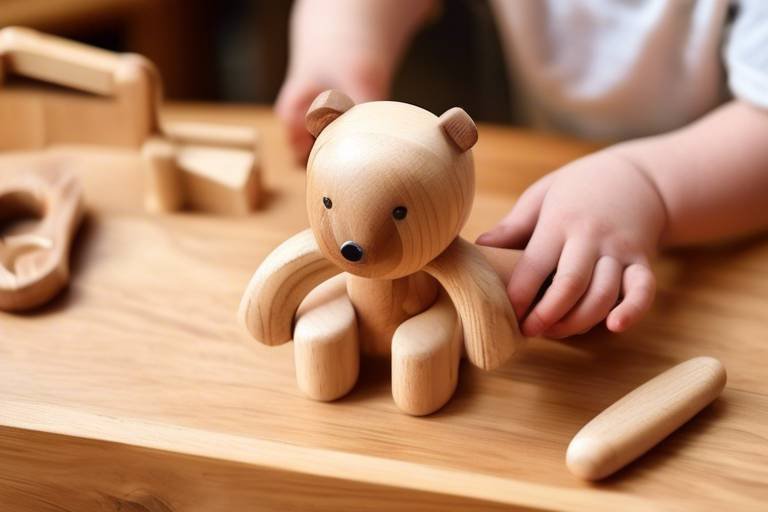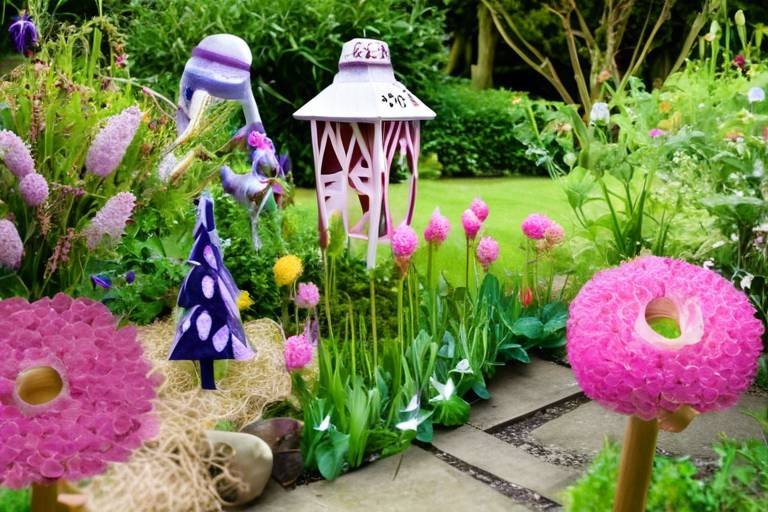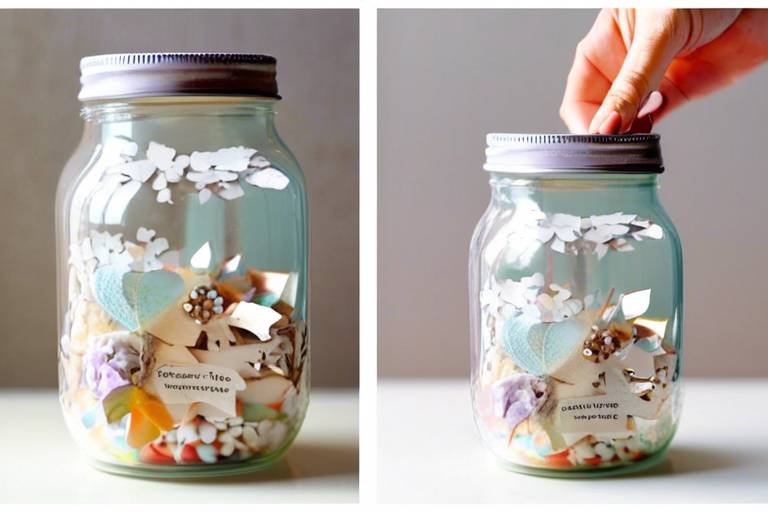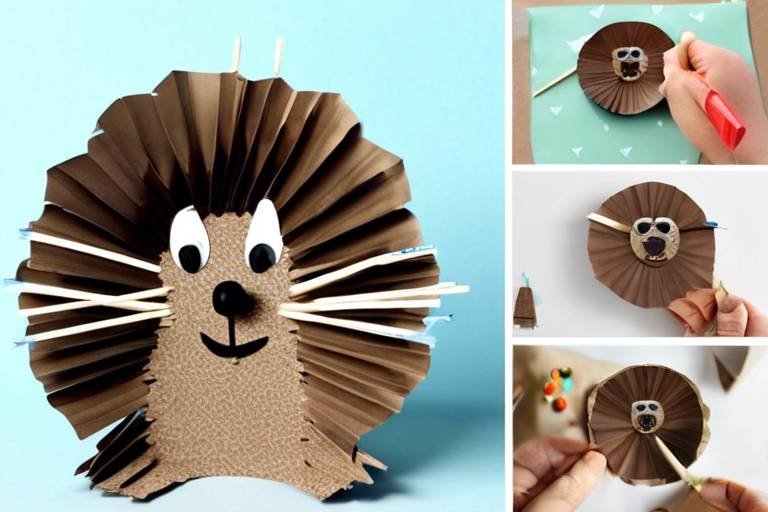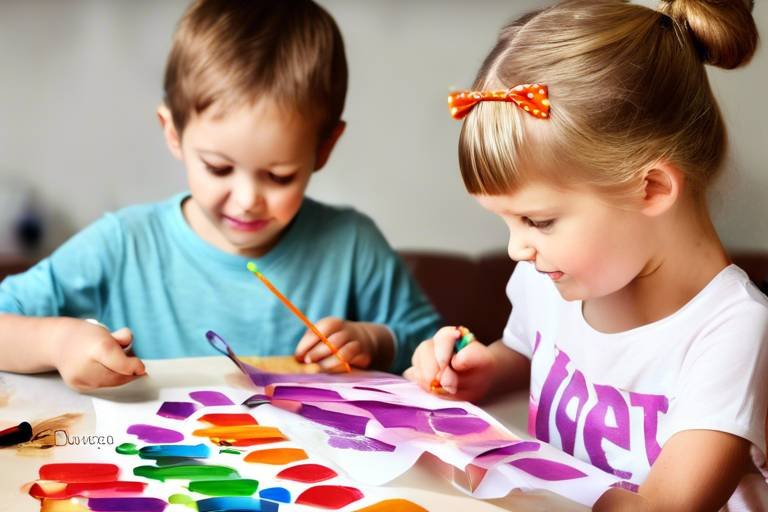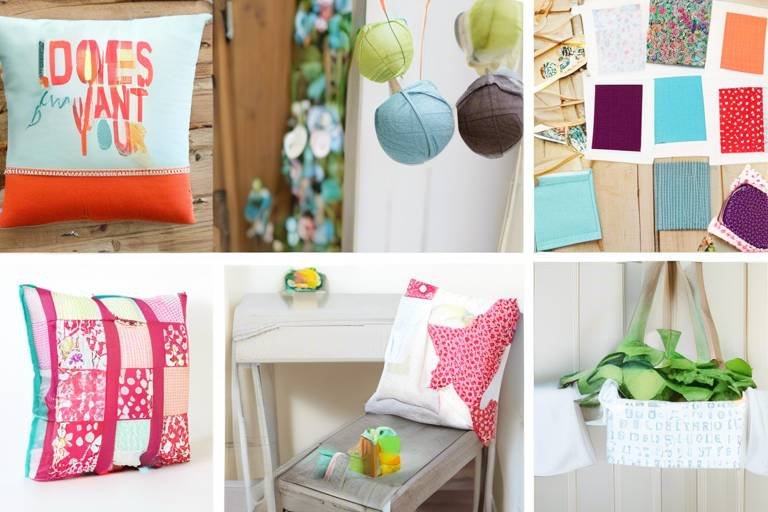How to Make Your Own Handcrafted Wooden Toys
Are you ready to embark on a journey into the world of handcrafted wooden toys? Crafting your own toys from scratch is not only a rewarding experience but also a way to create unique and personalized gifts that will be treasured for years to come. In this article, we will guide you through the process of making handcrafted wooden toys step by step, from selecting the right wood to adding those final personalized touches that make each toy special.

Selecting the Right Wood
When it comes to creating handcrafted wooden toys, selecting the right wood is crucial in ensuring the quality and longevity of your creations. Different types of wood offer unique characteristics that can enhance the durability and aesthetic appeal of your toys. Pine, maple, and birch are popular choices for toy making due to their strength and versatility.
Each type of wood has its own distinct features. Pine is known for its affordability and ease of working with, making it ideal for beginners. Maple, on the other hand, is prized for its durability and attractive grain patterns, perfect for creating heirloom-quality toys. Birch is a hardwood that offers a smooth finish and is often used for intricate detailing.
Consider the intended use of your toy when selecting the wood. For toys that will be handled frequently, a harder wood like maple may be more suitable to withstand wear and tear. For decorative toys, the grain patterns of pine can add a rustic charm. Understanding the characteristics of each wood type will help you choose the best material for your project.

Designing Your Toy
When it comes to designing your own handcrafted wooden toys, creativity knows no bounds. Designing a toy is like painting a picture, where every stroke and detail adds to the overall beauty and charm of the final product. Imagine yourself as a sculptor, shaping raw wood into a masterpiece that will bring joy to children and adults alike.
Before you start sketching your ideas, take a moment to think about the purpose of the toy. Consider the age group it is intended for, as well as any specific interests or themes you want to incorporate. Will it be a simple pull toy for toddlers or a intricate puzzle for older kids? The design process is where your imagination can truly shine, so don't be afraid to think outside the box.
Proportion is key when designing wooden toys. Just like a well-balanced meal, a well-proportioned toy is visually appealing and functions smoothly. Think about how different parts of the toy will interact with each other and ensure that the design is both aesthetically pleasing and structurally sound. Remember, a well-designed toy not only looks good but also functions well in play.
Adding playful elements to your toy design can elevate it from ordinary to extraordinary. Think about incorporating movable parts, bright colors, or unique textures to engage children's senses and spark their imagination. A simple toy car can become a racing machine with a few added details, turning playtime into a thrilling adventure.
As you bring your toy design to life, remember that the process is just as important as the final product. Enjoy the journey of creation, from the initial sketch to the finishing touches. Each design decision you make contributes to the overall character of the toy, making it a truly one-of-a-kind creation that will be cherished for years to come.

Tools and Materials Needed
This article provides step-by-step instructions and tips on creating unique and beautiful handcrafted wooden toys. From choosing the right wood to adding finishing touches, learn how to make toys that will be cherished for generations.
Explore different types of wood suitable for toy making, such as pine, maple, and birch. Understand the characteristics of each wood type and how they can enhance the durability and aesthetic appeal of your toys.
Discover the importance of thoughtful design in creating engaging and safe wooden toys. Learn how to sketch your ideas, consider proportions, and incorporate playful elements that will delight children.
When it comes to crafting handcrafted wooden toys, having the right tools and materials is essential for a successful project. Some of the essential items you will need include:
| Tools | Materials |
|---|---|
| Saws | Wood (pine, maple, birch) |
| Sandpaper | Non-toxic paints |
| Drill | Sealants |
These tools and materials will help you shape, decorate, and protect your wooden toys. Make sure to use them safely and effectively in your woodworking projects.
Master various woodworking techniques such as cutting, sanding, and assembling to bring your toy designs to life. Explore joinery methods, drilling techniques, and finishing touches that add charm to your creations.
Prioritize safety when making wooden toys by understanding best practices for handling tools, using protective gear, and creating child-safe designs. Ensure that your toys meet safety standards and are free from potential hazards.
Learn how to personalize your handcrafted wooden toys with custom details like engraving, painting, or adding fabric accents. Discover creative ways to make each toy unique and special for the recipient.
Understand the importance of testing your wooden toys for durability, safety, and playability. Learn how to conduct quality checks and make necessary adjustments to ensure your toys meet high standards.
Explore ways to share and showcase your handcrafted wooden toys, whether through gifting, selling, or displaying them at craft fairs. Embrace the joy of creating beautiful toys that bring happiness to children and adults alike.
Have questions about making handcrafted wooden toys? Check out some common FAQs below:
- Q: Can I use any type of wood for making toys?
- A: While some woods are more suitable than others, always ensure the wood is non-toxic and safe for children.
- Q: How can I ensure my wooden toys are durable?
- A: Properly seal and finish your toys to protect them from wear and tear.
- Q: Is it necessary to follow safety guidelines when woodworking?
- A: Yes, always prioritize safety by wearing protective gear and handling tools with caution.

Building Techniques
When it comes to creating handcrafted wooden toys, mastering various building techniques is essential to bring your designs to life. From cutting and sanding to assembling and finishing, each step plays a crucial role in the final outcome of your toy. Let's delve into the world of woodworking and explore the key building techniques that will help you craft beautiful and durable wooden toys.
One of the fundamental building techniques in toy making is precision cutting. Whether you are creating intricate shapes or simple designs, using the right saw and cutting technique is vital. By mastering the art of cutting, you can ensure that each piece fits together seamlessly, resulting in a well-crafted and sturdy toy.
Sanding is another crucial step in the building process that cannot be overlooked. Smooth and rounded edges not only enhance the aesthetic appeal of your wooden toys but also make them safe for children to play with. By using different grits of sandpaper and paying attention to detail, you can achieve a professional finish that is both visually pleasing and tactile.
Assembling your wooden toy requires precision and patience. Whether you are using traditional joinery methods like dovetail joints or modern techniques such as wood glue and screws, ensuring a secure and stable construction is key. Take your time to align the pieces accurately and test the strength of the joints to guarantee a durable and long-lasting toy.
Adding finishing touches is the final step in the building process that can elevate your wooden toy to a work of art. Whether you choose to paint, stain, or seal your creation, selecting the right finish can enhance the natural beauty of the wood and protect it from wear and tear. Experiment with different techniques and finishes to find the perfect combination that suits your design aesthetic.
By mastering these building techniques and paying attention to detail, you can create handcrafted wooden toys that are not only visually appealing but also safe and durable for children to enjoy. Embrace the creative process, experiment with different methods, and let your imagination soar as you bring your toy designs to life.

Safety Measures for Toy Making
When it comes to making handcrafted wooden toys, safety should always be a top priority. By following proper safety measures, you can ensure that your creations are not only beautiful but also safe for children to play with. One essential safety measure is to always wear protective gear, such as safety goggles and gloves, when using tools like saws and sanders. Additionally, it's crucial to work in a well-ventilated area to avoid inhaling harmful fumes from paints and sealants.
Another important safety consideration is to carefully inspect all wood materials for any defects or splinters that could pose a risk to children. Sanding down rough edges and surfaces is essential to prevent any potential injuries during play. Moreover, using non-toxic paints and sealants is vital to ensure that the toys are safe for children to handle and play with.
When designing wooden toys, it's essential to avoid small parts that could be a choking hazard for young children. Make sure that all components are securely attached and cannot be easily detached during play. Following age-appropriate guidelines for toy design is crucial to ensure that the toys are suitable for the intended age group.
Proper tool handling is also key to maintaining safety during the toy-making process. Always read and follow the manufacturer's instructions for tools and equipment to prevent accidents. Keep tools properly maintained and sharp to ensure clean cuts and reduce the risk of accidents. Educating yourself on safe woodworking practices and techniques is essential for creating toys that are both beautiful and safe for children to enjoy.

Adding Personalized Details
When it comes to creating handcrafted wooden toys, adding personalized details can truly elevate your creations to a whole new level. By incorporating custom touches, you can make each toy unique and special, adding a personal touch that will be cherished by both children and adults alike.
One way to personalize your wooden toys is through engraving. Whether it's a child's name, a special date, or a meaningful message, engraving adds a sentimental value to the toy. This personalization creates a connection between the toy and its recipient, making it a truly one-of-a-kind gift.
Another way to add personalized details is through painting. Non-toxic paints can be used to add vibrant colors and designs to your wooden toys. From intricate patterns to simple motifs, painting allows you to unleash your creativity and tailor each toy to suit the recipient's preferences.
Additionally, fabric accents can be incorporated to add texture and depth to your wooden toys. Whether it's a soft fabric tail on a wooden animal or a cozy fabric blanket for a wooden doll, these fabric details can enhance the sensory experience of playing with the toy.
Furthermore, consider adding small accessories or embellishments to your wooden toys. Tiny bows, miniature buttons, or even small beads can add a whimsical touch to your creations. These small details can make a big impact and showcase your attention to detail and craftsmanship.
Overall, personalizing your handcrafted wooden toys allows you to infuse them with character and charm. Whether you're creating a toy for your own child, a friend, or a customer, adding these personalized details ensures that each toy is a unique work of art that brings joy and delight to its recipient.

Testing and Quality Assurance
When it comes to creating handcrafted wooden toys, testing and quality assurance are crucial steps to ensure that your creations meet high standards of durability, safety, and playability. Before sharing your toys with others, it's essential to conduct thorough testing to identify any potential issues and make necessary adjustments.
One effective way to test your wooden toys is to engage in playtesting, where you observe how children interact with the toys. This hands-on approach allows you to assess the toy's functionality, durability, and overall appeal. By watching children play with your creations, you can gain valuable insights into areas that may need improvement.
In addition to playtesting, conducting quality checks is essential to ensure that your wooden toys meet safety standards. Inspect the toys for any sharp edges, loose parts, or potential choking hazards. Verify that all components are securely attached and that the toy is free from any defects that could compromise its safety.
Another aspect of quality assurance is assessing the craftsmanship of your wooden toys. Look for any imperfections in the finish, such as uneven sanding or paint drips. Ensure that the toy is structurally sound and can withstand the rigors of play without breaking or splintering.
Once you have completed testing and quality assurance measures, make any necessary adjustments to address any issues identified during the process. Whether it's reinforcing joints, smoothing rough edges, or applying an additional coat of sealant, taking the time to fine-tune your wooden toys will help ensure their longevity and appeal.

Sharing Your Creations
This article provides step-by-step instructions and tips on creating unique and beautiful handcrafted wooden toys. From choosing the right wood to adding finishing touches, learn how to make toys that will be cherished for generations.
Once you have completed crafting your handcrafted wooden toys, it's time to share your creations with the world. Whether you want to gift them to loved ones, sell them, or showcase them at craft fairs, there are various ways to spread the joy of your craftsmanship.
If you decide to gift your wooden toys, consider personalizing them for the recipient. Adding a name engraving or painting their favorite colors can make the gift even more special. The personal touch will show that you put thought and care into creating something unique for them.
For those looking to sell their wooden toys, explore online platforms, local markets, or craft fairs to reach potential customers. Create a visually appealing display that highlights the craftsmanship and quality of your toys. Consider offering customization options to attract more buyers.
Displaying your handcrafted wooden toys at craft fairs can be a great way to showcase your work to a wider audience. Engage with visitors, share the story behind each toy, and demonstrate the craftsmanship involved. Networking with other artisans and receiving feedback can also help you improve and grow your craft.
Remember, sharing your creations is not just about selling or displaying them—it's about spreading joy and creativity. Each wooden toy you make has the potential to bring happiness to children and adults alike, creating lasting memories and cherished moments.
Stay tuned for the frequently asked questions section at the end of this article for more insights and answers to common queries about handcrafted wooden toy making.
Frequently Asked Questions
- What types of wood are best for making handcrafted wooden toys?
Popular choices for wooden toys include pine, maple, and birch due to their durability and aesthetic appeal. Each wood type has unique characteristics that can enhance the quality of the toys.
- Do I need special tools to make wooden toys?
Yes, essential tools for crafting wooden toys include saws, sandpaper, non-toxic paints, and sealants. These tools are necessary for cutting, shaping, and finishing the wood to create beautiful toys.
- How can I ensure the safety of the wooden toys I make?
It is crucial to follow safety measures such as using protective gear, child-safe designs, and quality checks. Prioritize safety by understanding best practices and ensuring that the toys meet safety standards.
- Can I personalize the wooden toys I create?
Absolutely! You can add custom details like engraving, painting, or fabric accents to personalize your handcrafted wooden toys. This allows you to create unique and special toys for your recipients.
- How can I share my handcrafted wooden toys with others?
You can share your creations by gifting them, selling them, or displaying them at craft fairs. Embrace the joy of creating beautiful toys that bring happiness to both children and adults.

